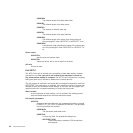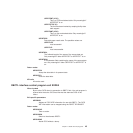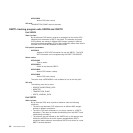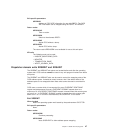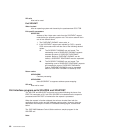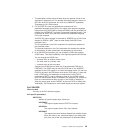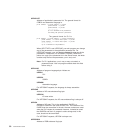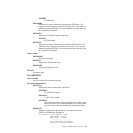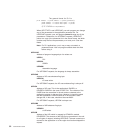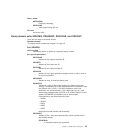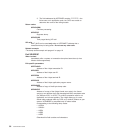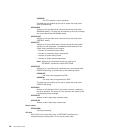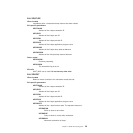The general format for PL/I is:
plist address --> parm1 address --> parm1 (parmcount)
parm2 address --> locator descriptor --> parm2
parm3 address --> locator descriptor --> parm3
..............
up to a maximum of 18 parameters.
When UEPCTYPE is not UEPCSHIP, your exit program can change
any of the parameters in the application parameter list. For
UEPCSHIP requests, your exit program cannot change any of the
parameters. Furthermore, for UEPCSHIP requests, UEPAPLIST
points to a copy of the parameter list in the above format, but which
contains only the first two parameters parm1 and parm2. See also
Notes.
Note: For PL/I applications, parm1 may or may not contain a
parameter-count. Your exit program should check this field
before using it.
UEPLANG
Address of program language byte. Its values are:
UEPPLI
PL/I
UEPCBL
COBOL
UEPASM
Assembler language.
For UEPCSHIP requests, the language is always assembler.
UEPIOAX
Address of I/O area existence flag byte:
UEPIOA1
I/O area exists.
For UEPCSHIP requests, the I/O area existence flag is always off.
UEPIOA
Address of I/O area. This is the application’s IOAREA, or
DFHEDP’s IOAREA in the case of EXEC DLI. The contents of the
IOAREA can be overwritten in the exit and are returned to the
application program in the new form. However, it should be noted
that the application’s IOAREA could be in the program’s static
storage and, in this case, should not be overwritten.
For UEPCSHIP requests, UEPIOA is always zero.
UEPUIBX
Address of UIB existence flag byte:
UEPUIB1
a UIB exists.
UEPUIB
Address of the UIB, which is mapped by DFHUIB in module
DFHDBCOP. The contents of the UIB can be overwritten in the exit
for all types of request, including UEPCSHIP. The new contents are
returned to the application or to the region that function shipped the
request.
52 Customization Guide



